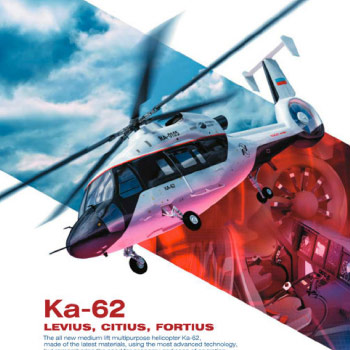Category: Aerospace Specific
Aerospace Advertising: How to Grab Attention
 No matter the stated goals of an ad, to be effective it must accomplish three things — capture the viewer’s attention, communicate the desired facts or attitudes, and cause the viewer to feel how what they’ve learned is important and desirable and how a future with the advertised product or service or position will be a better future for them.
No matter the stated goals of an ad, to be effective it must accomplish three things — capture the viewer’s attention, communicate the desired facts or attitudes, and cause the viewer to feel how what they’ve learned is important and desirable and how a future with the advertised product or service or position will be a better future for them.
See, understand, feel.
If the ad does not grab attention, if it is skipped over, ignored, or even actively avoided, there will be no step two.
How can you grab attention? Graphics are often the tool of choice — a photo or illustration that draws the eye, colors that stand out (bold, subtle, different, non-existent), a composition that causes a pause. But a sufficiently bold (in design or sentiment) headline can perform the same function.
Once grabbed, the viewer’s attention must be rewarded. There should be an appropriate connection between what caused the pause and the next level of engagement. While there is often descriptive or narrative copy, it is not a requirement and might even be a crutch, supporting an otherwise pointless or uninteresting message. An image might communicate all that is required. Or text might be unaccompanied by other graphics. Or somewhere in between.
Remember, the point of all the effort to write, design, and otherwise produce this bit of commercial art must be a change in perception. Such changes are greatest when the ad supports the brand image that is developed across all media and touch points, and leads to the viewer believing that their future will be better with the product or service communicated in the ad. It’s as simple as that.
Simple to state, perhaps, but not simple to execute.
Perhaps the first step is easily judged — does the ad stop the viewer long enough to allow for step two? This requires evaluating the ad not just in itself, but also in context. How does the ad fit with, or stand out from, the editorial, graphics, layout, and other advertising that surround it and otherwise comprise its milieu? Other parts of the magazine? Other ads in that market space? The general graphic sensibility of the times?
And if it stops the viewer, does the ad impart important information? Does it communicate why this product/service/action is superior to others on offer or, perhaps even better, why the offer has no competition and is desirable in and of itself?
But most importantly, does the information transform a viewer’s vision of their future? Does it make the viewer feel? That is the ultimate and singularly relevant question.
So, whether you are creating or judging an ad, be honest with yourself — does it make the viewer see, understand, and feel? If it does, it is working.
If it doesn’t, it’s a waste of money.
Critiquing An Aerospace Advertisement: Russian Helicopters Ka-62
 I thought I’d take a look at an ad from a relative newcomer to the western markets, in particular an ad for the Ka-62 helicopter from Russian Helicopters.
I thought I’d take a look at an ad from a relative newcomer to the western markets, in particular an ad for the Ka-62 helicopter from Russian Helicopters.
In Monday’s, I talk about how an ad must perform three tasks, in succession, to be effective: cause the reader to see, understand, and feel.
To see the ad means to stop long enough, in flipping pages or pixels, to take an interest in what might be represented.
The Ka-62 ad does that for me. It is populated with elements that are arranged to clearly indicate the nature of the ad — it’s about a helicopter. A dynamic view of a helicopter, a bold and clear headline (simply the name of the product), and obviously enough copy to suggest I may learn something, but not so much that I’m afraid to venture into reading it. I’m intrigued and willing to take the next step: spend a few moments deciding if I can learn something of value.
Could the graphics and copy have led to an ad about training, or support, or ITAR issues, or insurance? No. The background image of the flight deck, and the tail rotor, and some other murky effect or graphic, all blended together, is not entirely clear in what is being offered, but the aircraft on top, pointing to the headline, prevents confusion.
What is a little confusing is the subhead: levius, citius, fortius. I assumed it to be Latin, and figured it was interesting, but with a poor comprehension of the language, I felt a bit ignorant. That feeling could have been ameliorated if the body copy provided the translation but it didn’t and so, right where you, ad creator, want to be creating understanding, you have placed a stumbling block. (By the way, it translates to smoother, faster, stronger; reasonable but pretty much wasted by presenting it in a dead language.)
The body copy is otherwise fine. Nothing fancy, and a little vague in its claims, but sufficient to add to my understanding of the product and leaving me with enough questions to be interested in learning more. Maybe not now, by calling or emailing or even typing in the URL, but on my radar to be alert for other ads, stories, press releases, etc.
So, did my seeing and understanding lead to a change in my feelings? Yes.
I knew almost nothing about the product, and now I’m primed to learn more as the opportunities present themselves. I feel better about the company, too, because the graphics and the writing were appropriate to the marketplace and rewarded me for the time I spent. If more ads from Russian Helicopters support this style and approach, I will be open to spending time with those ads. And if other media from them support the same brand image, it will strengthen their brand in my mind. And even if I determine this product is not for me, other offers from them will be viewed with an accepting eye.
Mission(s) accomplished.
Some More Things We Know About Aerospace Marketing
![Aerospace head_65223433 [Converted].eps](http://66.147.244.184/~bdnaeros/wp-content/uploads/2014/02/aerospacehead_350-300x212.jpg) We know that aerospace companies are conservative and tend to copy one another in their marketing efforts. Everyone’s logo is red, white and blue. Everyone has a Skunk Works, or a Phantom Works, or a Hawk Works. Use this to your advantage and distinguish yourself from the crowd of lookalikes.
We know that aerospace companies are conservative and tend to copy one another in their marketing efforts. Everyone’s logo is red, white and blue. Everyone has a Skunk Works, or a Phantom Works, or a Hawk Works. Use this to your advantage and distinguish yourself from the crowd of lookalikes.
We know that lots of Aerospace and Defense companies do not have a Crisis Communications plan and are completely unprepared should an incident or accident occur. The ramifications could be devastating.
We know that lots of aerospace and defense companies are spending money on ad placements in unaudited magazines that won’t do them any good. If you don’t know exactly who is receiving a given publication, you should not be advertising there.
We know that not everyone in our industry believes in marketing and that some think it’s a necessary evil. We also know that the business that finds itself immune to the necessity of marketing sooner or later finds itself immune to business.
Some Things We Know About Aerospace Marketing
 We know that it’s not unusual for aerospace and defense companies to have a “if we build it, they will come” mentality. That may have been true at one time, but today there are too many providers, and technology is changing too quickly, to make that assumption. It’s not enough to have good technology. You must be prepared to tell the marketplace why your technology is better and what it can do for the customer.
We know that it’s not unusual for aerospace and defense companies to have a “if we build it, they will come” mentality. That may have been true at one time, but today there are too many providers, and technology is changing too quickly, to make that assumption. It’s not enough to have good technology. You must be prepared to tell the marketplace why your technology is better and what it can do for the customer.
We understand that million- and billion-dollar aerospace and defense sales take years to cultivate, and that’s one reason a powerful, enduring brand is so critically important to this market.
We know that there’s a leadership gap in the American aerospace industry. We can make a case for why you should fill it and what that could mean to your company.
We know that engineers are not marketing people. And marketing people are not engineers. We know that marketing people shouldn’t design airplanes and engineers shouldn’t design ads.
We know it’s more important to show your products and technology than it is to talk about them. In person is best. Video demonstration is the second choice. If you have to choose between advertising and demonstrations, you’ve got to go with the demo.
Over to you. What do you know about aerospace marketing?
Why Paying for Photography Rights Matters
 Photographers are weird.
Photographers are weird.
I mean, they want to get paid for their work. What’s up with that? They’re a nervy bunch, all high and mighty about their talent and their rights and whatnot. Geez.
OK, seriously. For some reason, a lot of aerospace marketing people don’t think they should have to compensate photographers for their work — and that’s just wrong. In our business, it’s a big red warning flag when people brag that they never pay for the photography they use for marketing purposes.
Professional photographers have the knowledge and the skill to make you, your company and your products look your best. From our standpoint, the right photo can make or break a project. Professional photographers are in business, and as a business, need to make a profit.
I just don’t understand those who think otherwise, do you?
Aerospace Marketing Tips: Advertising and ROI
November 1, 2012 – As Andy Rooney might have said, “Have you ever noticed how some ad reps claim to know what is best for your clients? And how what is best is always advertising in their magazine?” Or they claim a superior ROI, though they have not a whit of evidence to back it up, and no real way to generate that evidence?
ROI is especially difficult to measure, since while the costs of an ad and its display might be captured, identifying the actual income, that magical “return” on the investment, is almost hopelessly beyond the ability of any company and their agency. At least in B2B. You would need to connect the purchase of a component or a fleet to the costs of creating and running the ad, and then ascribe only the appropriate share of responsibility for the sale as separate from the efforts (and associated expenses) of sales people and public relations and trade shows and direct mail and web sites and on and on.
Aerospace is not a realm of snap purchase decisions, which means influencing those decisions must occur over a span of time and with a strategic, integrated, campaign across multiple channels. Despite some reps’ desire to convince me that theirs is the only place to advertise, and I should move money from other publications (or e-newsletters or web sites) to buy their product, it’s only Jet A smoke and polished aluminum mirrors.






